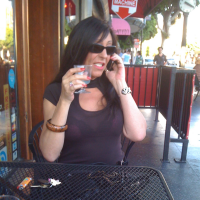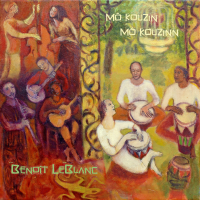Home » Jazz Musicians » Rahsaan Roland Kirk
Rahsaan Roland Kirk
Kirk was born Ronald Theodore Kirk in Columbus, Ohio, but felt compelled by a dream to transpose two letters in his first name to make Roland. In 1970, Kirk added "Rahsaan" to his name. Preferring to lead his own groups, Kirk rarely performed as a sideman, though he did record with arranger Quincy Jones, Roy Haynes and had especially notable stints with Charles Mingus. He played the lead flute and solo on Jones' Soul Bossa Nova, a song popularized in the Austin Powers films (Jones 1964; McLeod et al. 1997). His playing was generally rooted in soul jazz or hard bop, but Kirk's knowledge of jazz history allowed him to draw on many elements of the music's history, from ragtime to swing and free jazz. Kirk also regularly explored classical and pop music. Kirk played and collected a number of musical instruments, mainly various saxophones, clarinets and flutes. His main instruments were a tenor saxophone and two obscure saxophones: the manzello (similar to a soprano sax) and the stritch (a straight alto sax lacking the instrument's characteristic upturned bell). Kirk modified these instruments himself to accommodate his simultaneous playing technique. He typically appeared on stage with all three horns hanging around his neck, as well as a variety of other instruments, including flutes and whistles, and often kept a gong within reach. Kirk also played harmonica, english horn, recorders and was a competent trumpeter. He often had unique approaches, using a saxophone mouthpiece on a trumpet or playing nose flute. He additionally used many extramusical sounds in his art, such as alarm clocks, whistles, sirens, a section of common garden hose ("the black mystery pipes") and even primitive electronic sounds (before such things became commonplace). Kirk was also an influential flautist, employing several techniques that he developed himself. One technique was to sing or hum into the flute at the same time as playing. Another was to play the standard transverse flute at the same time as a nose flute. Some observers thought that Kirk's bizarre onstage appearance and simultaneous multi-instrumentalism were just gimmicks, especially when coming from a blind man, but these opinions usually vanished when Kirk actually started playing. He used the multiple horns to play true chords, essentially functioning as a one-man saxophone section. Kirk insisted that he was only trying to emulate the sounds he heard in his mind. Kirk was also a major exponent and practitioner of circular breathing.
Read moreTags
Rahsaan Roland Kirk, Haeun Joo, Ishmael Ali & Satoko Fujii

by Maurice Hogue
Two never-heard-before releases present Rahsaan Roland Kirk holding forth at two 1960s gigs, recorded live at the Village Vanguard in New York and at The Penthouse in Seattle are the highlights in this episode of One Man's Jazz, along with a tasty piano trio recording by South Korean pianist Haeun Joo, Chicago cellist Ishmael Ali, a reunited Satoko Fujii Quartet and the innovative NL-Switch Orchestra from The Netherlands. Polish saxophonist Maciej Sikala and his trio make their first appearance on ...
Continue ReadingTwo Unearthed Live Gems By Rahsaan Roland Kirk
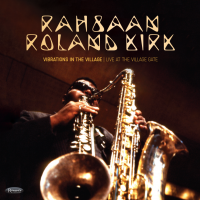
by Michael Blake
What a joy it was to sit down with these never-before-heard live recordings from American jazz genius Rahsaan Roland Kirk. Unearthed by producer Zev Feldman and released in tandem by Resonance Records, these beautifully packaged CD sets--complete with striking artwork, evocative photos, and heartfelt personal reflections--are a marvelous tribute in their own right. I was first introduced to Kirk as a teenager while visiting friends whose parents' record collections often included his more commercially successful albums like The ...
Continue ReadingRahsaan Roland Kirk: Seek & Listen: Live At The Penthouse
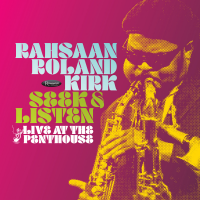
by Jack Kenny
Few figures in jazz history have embodied the word original quite like Rahsaan Roland Kirk. Sightless from infancy, yet bursting with boundless vision, he turned live performance into theatre, ritual and revelation. On stage, he appeared as a commanding silhouette festooned with flutes, whistles, tenor saxophone, clarinet, bells, harmonica and his self-fashioned instruments--the manzello and stritch. Before a note was played, the spectacle alone promised something extraordinary. When the music began, it revealed what Kirk himself called Black Classical Music: ...
Continue ReadingRahsaan Roland Kirk: Vibrations In The Village: Live At The Village Gate

by Joshua Weiner
Thankfully, fans of classic jazz rarely have long to wait before another wonderful, previously unreleased treasure drops from the indefatigable producer Zev Feldman and the folks at Resonance Records. A pair of live releases by multi-instrumentalist, showman, and musical conjuror Rahsaan Roland Kirk join the limited-edition vinyl lineup for Record Store Day's Black Friday 2025 event, with a standard CD release one week later. Seek & Listen: Live At The Penthouse (Resonance Records, 2025) documents 1967 performances, while ...
Continue ReadingDue spettacolari inediti dal vivo di Rahsaan Roland Kirk

by Michael Blake
Abbiamo chiesto a Michael Blake, affermato sassofonista sulla scena newyorchese e cultore della musica di Rahsaan Roland Kirk, di ascoltare i due recenti inediti dal vivo di Kirk e condividere con i lettori di All About Jazz le sue impressioni. Ecco il resoconto Che gioia ritrovare questi inediti dal vivo del genio del jazz americano Rahsaan Roland Kirk. Riesumati dal produttore Zev Feldman e pubblicati in parallelo da Resonance Records, questi cofanetti CD magnificamente curati--completi di libretti ...
Continue ReadingUnearthed... Previously Unreleased Music from Rahsaan Roland Kirk + New Tunes from Brandon Sanders and Lafayette Harris Jr.

by Hobart Taylor
Rahsaan Roland Kirk Live Recording, plus gorgeous vocals from Rufus Wainwright and La Paula Herrera.Playlist Host Speaks 00:00 Brandon Sanders “Soul Eyes" from Lasting Impression (Savant/HighNote) 00:15 Sharel Cassity “Gratitude" from Gratitude (Sunnyside) 6:14 Los Angeles Improvisations Ensemble “Sussex Elegy" from Insubordinate Lunar Transgressions (Denouement) 10:58 Host Speaks 16:42 Marianne Solivan “Open the Door" from Break's Over (Imani) 17:39 Lafayette Harris, Jr “Good Morning Heartache" from All In Good Time (Savant) 22:51 Geri Allen/Charlie Haden/Paul Motian “Obtuse Angles" ...
Continue ReadingRahsaan Roland Kirk: Seek & Listen: Live At The Penthouse

by Dan McClenaghan
Most jazz fans are likely familiar with the visual images that are usually tagged onto the music of Rahsaan Roland Kirk (1935 -1977)--photos of a man in black sunglasses with three (or more) reed instruments around his neck and/or in his mouth. That these optics often precede the experience of the music is ironic, since Kirk himself was blind. But Kirk was a showman. These images caught the attention. And he did indeed play three (maybe only two; maybe the ...
Continue ReadingJazz Musician of the Day: Rahsaan Roland Kirk

Source:
Michael Ricci
All About Jazz is celebrating Rahsaan Roland Kirk's birthday today!
Kirk was born Ronald Theodore Kirk in Columbus, Ohio, but felt compelled by a dream to transpose two letters in his first name to make Roland. In 1970, Kirk added “Rahsaan" to his name. Preferring to lead his own groups, Kirk rarely performed as a sideman, though he did record with arranger Quincy Jones, Roy Haynes and had especially notable stints with Charles Mingus. He played the lead flute and ...
read more
Jazz Musician of the Day: Rahsaan Roland Kirk

Source:
Michael Ricci
All About Jazz is celebrating Rahsaan Roland Kirk's birthday today!
Kirk was born Ronald Theodore Kirk in Columbus, Ohio, but felt compelled by a dream to transpose two letters in his first name to make Roland. In 1970, Kirk added “Rahsaan" to his name. Preferring to lead his own groups, Kirk rarely performed as a sideman, though he did record with arranger Quincy Jones, Roy Haynes and had especially notable stints with Charles Mingus. He played the lead flute and ...
read more
Jazz Musician of the Day: Rahsaan Roland Kirk

Source:
Michael Ricci
All About Jazz is celebrating Rahsaan Roland Kirk's birthday today!
Kirk was born Ronald Theodore Kirk in Columbus, Ohio, but felt compelled by a dream to transpose two letters in his first name to make Roland. In 1970, Kirk added “Rahsaan" to his name. Preferring to lead his own groups, Kirk rarely performed as a sideman, though he did record with arranger Quincy Jones, Roy Haynes and had especially notable stints with Charles Mingus. He played the lead flute and ...
read more
Jazz Musician of the Day: Rahsaan Roland Kirk

Source:
Michael Ricci
All About Jazz is celebrating Rahsaan Roland Kirk's birthday today!
Kirk was born Ronald Theodore Kirk in Columbus, Ohio, but felt compelled by a dream to transpose two letters in his first name to make Roland. In 1970, Kirk added “Rahsaan" to his name. Preferring to lead his own groups, Kirk rarely performed as a sideman, though he did record with arranger Quincy Jones, Roy Haynes and had especially notable stints with Charles Mingus. He played the lead flute and ...
read more
Videos: Rahsaan Roland Kirk

Source:
JazzWax by Marc Myers
Rahsaan Roland Kirk was one of the purest and most fascinating jazz artists and composers of the post-war period. Blind from birth, he was a soulful and experimental and romantic multi-instrumentalist who defied his own physical limitations to become the very essence of jazz in all its free but gifted glory. Here are five clips of Kirk in action... Here's Kirk playing Stevie Wonder's My Cherie Amour in Paris in 1972... Here's Making Love After Hours in 1967, with pianist ...
read more
Jazz Musician of the Day: Rahsaan Roland Kirk

Source:
Michael Ricci
All About Jazz is celebrating Rahsaan Roland Kirk's birthday today!
Kirk was born Ronald Theodore Kirk in Columbus, Ohio, but felt compelled by a dream to transpose two letters in his first name to make Roland. In 1970, Kirk added “Rahsaan" to his name. Preferring to lead his own groups, Kirk rarely performed as a sideman, though he did record with arranger Quincy Jones, Roy Haynes and had especially notable stints with Charles Mingus. He played the lead flute and ...
read more
Jazz Musician of the Day: Rahsaan Roland Kirk

Source:
Michael Ricci
All About Jazz is celebrating Rahsaan Roland Kirk's birthday today!
Kirk was born Ronald Theodore Kirk in Columbus, Ohio, but felt compelled by a dream to transpose two letters in his first name to make Roland. In 1970, Kirk added “Rahsaan" to his name. Preferring to lead his own groups, Kirk rarely performed as a sideman, though he did record with arranger Quincy Jones, Roy Haynes and had especially notable stints with Charles Mingus. He played the lead flute and ...
read more
Jazz Musician of the Day: Rahsaan Roland Kirk

Source:
Michael Ricci
All About Jazz is celebrating Rahsaan Roland Kirk's birthday today!
Kirk was born Ronald Theodore Kirk in Columbus, Ohio, but felt compelled by a dream to transpose two letters in his first name to make Roland. In 1970, Kirk added “Rahsaan" to his name. Preferring to lead his own groups, Kirk rarely performed as a sideman, though he did record with arranger Quincy Jones, Roy Haynes and had especially notable stints with Charles Mingus. He played the lead flute and ...
read more
Roland Kirk - Cuckoo Serenade

Source:
JazzWax by Marc Myers
On Sept. 16 and 17, 1964. Roland Kirk recorded tracks for an important album for Mercury called I Talk With the Spirits. It's important because of its instrumental eclecticism, its spiritual qualities and its original compositions by Kirk and playing by the group. The music holds up gloriously. It's independent-minded, it's melodic and it's soulful. On these particular days, two songs were recorded—the album's title track and Serenade to a Cuckoo. The personnel on both songs featured Roland Kirk (c-fl,African ...
read more
Jazz Musician of the Day: Rahsaan Roland Kirk

Source:
Michael Ricci
All About Jazz is celebrating Rahsaan Roland Kirk's birthday today!
Kirk was born Ronald Theodore Kirk in Columbus, Ohio, but felt compelled by a dream to transpose two letters in his first name to make Roland. In 1970, Kirk added “Rahsaan" to his name. Preferring to lead his own groups, Kirk rarely performed as a sideman, though he did record with arranger Quincy Jones, Roy Haynes and had especially notable stints with Charles Mingus. He played the lead flute and ...
read more
Rent Romus
saxophone, altoDave Mullen
saxophone, tenorTerry Edwards
saxophoneNick Rosario
tromboneJoey "G-Clef" Cavaseno
saxophone, altoKenny Kirkwood
vocalsAnthony E Nelson, Jr.
saxophoneAdam Simmons
woodwindsJeremy Terry
saxophoneBauke Meersman
saxophone, tenorPhotos
Music
My Girl
From: Brotherman in the FatherlandBy Rahsaan Roland Kirk











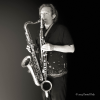
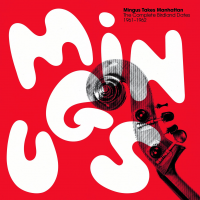














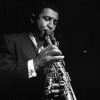









_with_Skip_Mcdonald_(Right)_23_n.jpg)





